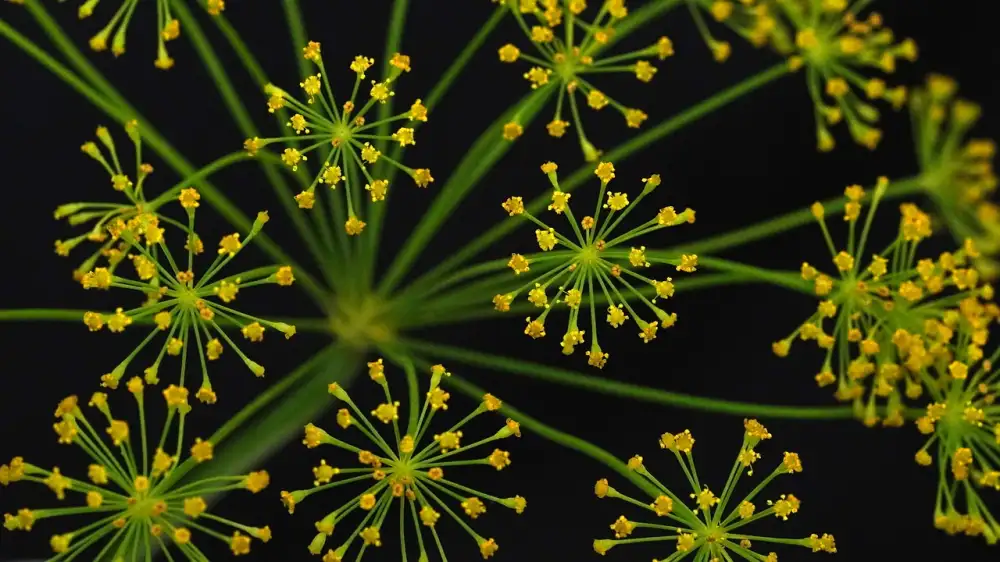Spice Up Your Recipes: Unveiling the Magic of Indian Spices

- Cumin: A versatile spice with a warm, earthy flavor
- Turmeric: Known for its vibrant yellow color and health benefits
- Coriander: Adds a citrusy and floral note to dishes
- Cardamom: A fragrant spice used in both sweet and savory recipes
- Cloves: Intense and aromatic, perfect for adding depth to curries
- Cinnamon: Adds warmth and sweetness to Indian desserts and beverages
- Fenugreek: Known for its unique bitter taste and medicinal properties
- Mustard Seeds: Adds a nutty and pungent flavor to various dishes
- Curry Leaves: Essential for authentic Indian curries and rice dishes
- Asafoetida: A strong-smelling spice that enhances the flavor of vegetarian dishes
Indian cuisine is renowned for its bold and vibrant flavors, and at the heart of these flavors lie a diverse array of spices. Indian spices are not only used for their taste but also for their medicinal properties. These aromatic ingredients have been an integral part of Indian cooking for centuries, adding depth, complexity, and a touch of magic to every dish. From the warm earthiness of cumin to the vibrant yellow hue of turmeric, each spice brings its own unique character to the table. Join us on a culinary journey as we unveil the enchanting world of Indian spices and discover how they can transform your recipes into culinary masterpieces.
Cumin: A versatile spice with a warm, earthy flavor
Cumin is a versatile spice that adds a warm and earthy flavor to dishes. It is widely used in Indian cuisine and is an essential ingredient in many spice blends, such as garam masala. Cumin seeds are small and oblong with a distinctive aroma. When toasted or ground, they release their rich flavor and fragrance, enhancing the taste of various dishes. Cumin is often used in curries, stews, soups, and even in marinades for meats and vegetables. Its unique flavor profile makes it a popular choice for adding depth and complexity to recipes. So, next time you want to add a touch of warmth to your cooking, reach for cumin and experience its magical flavor unfold.
Turmeric: Known for its vibrant yellow color and health benefits
Turmeric, a golden spice, is well-known for its vibrant yellow color and numerous health benefits. It contains an active compound called curcumin, which has powerful anti-inflammatory and antioxidant properties. Studies have shown that turmeric may help reduce the risk of chronic diseases such as heart disease, cancer, and Alzheimer's. Additionally, it may aid in digestion, boost immune function, and promote healthy skin. Whether used in curries, rice dishes, or even smoothies, turmeric adds not only a beautiful hue but also a dose of health to your recipes.
Coriander: Adds a citrusy and floral note to dishes
Coriander, also known as cilantro, is a popular spice in Indian cuisine that adds a unique citrusy and floral note to dishes. It is derived from the seeds of the coriander plant and has been used for centuries in various culinary traditions.
Coriander not only enhances the flavor of dishes but also offers numerous health benefits. It is rich in antioxidants and essential oils that promote digestion and improve heart health. Additionally, coriander is known for its antibacterial properties and may help fight against foodborne illnesses.
In Indian cooking, coriander is commonly used as a seasoning in curries, chutneys, and marinades. Its distinct flavor pairs well with other spices like cumin and turmeric, creating a harmonious blend of flavors.
To incorporate coriander into your recipes, you can either use whole seeds or ground powder. Toasting the seeds before grinding them releases their aromatic oils and intensifies their flavor. You can sprinkle ground coriander on roasted vegetables, add it to soups or stews, or even use it as a garnish for salads.
Next time you're looking to add a refreshing twist to your dishes, reach for coriander. Its citrusy and floral notes will elevate your recipes and transport your taste buds to the vibrant flavors of India.
Cardamom: A fragrant spice used in both sweet and savory recipes
Cardamom is a fragrant spice that adds a unique flavor to both sweet and savory dishes. It is native to India and is one of the most expensive spices in the world. The spice comes from the seeds of plants belonging to the ginger family. Cardamom has a strong, aromatic taste with hints of citrus and mint. Its warm and slightly sweet flavor makes it a popular ingredient in Indian cuisine. It is used in various dishes like biryani, curries, desserts, and even tea. Additionally, cardamom has been used for centuries in traditional medicine for its digestive properties and as a breath freshener. With its versatile flavor profile and health benefits, cardamom truly adds magic to any recipe it graces.
Cloves: Intense and aromatic, perfect for adding depth to curries
Cloves are one of the most intense and aromatic spices in Indian cuisine. These small, dark brown flower buds have a strong, pungent flavor that adds depth to curries and other savory dishes. Cloves are often used whole or ground, releasing their warm and slightly sweet aroma when cooked. They are known for their ability to enhance the flavors of meat and vegetable curries, giving them a rich and complex taste. Additionally, cloves have been used in traditional medicine for their antibacterial and antiviral properties. So, next time you're cooking a curry, don't forget to add a few cloves for that extra burst of flavor!
Cinnamon: Adds warmth and sweetness to Indian desserts and beverages
Cinnamon, with its warm and sweet flavor, is a key ingredient in many Indian desserts and beverages. This aromatic spice not only adds depth to dishes but also offers numerous health benefits. It is known to have anti-inflammatory properties and can help regulate blood sugar levels. Cinnamon is often used in traditional Indian sweets like kheer (rice pudding) and gulab jamun (deep-fried milk dumplings soaked in syrup). It is also a popular addition to chai tea, providing a comforting and fragrant note. So, next time you're craving something sweet or need a cozy beverage, reach for cinnamon and let its magical warmth infuse your creations.
Fenugreek: Known for its unique bitter taste and medicinal properties
Fenugreek, a popular spice in Indian cuisine, is known for its unique bitter taste and numerous medicinal properties. It is derived from the seeds of the fenugreek plant and has been used for centuries in traditional medicine. Fenugreek is rich in fiber, iron, and protein, making it a nutritious addition to your diet. It is believed to aid digestion, reduce inflammation, and improve blood sugar control. Additionally, fenugreek seeds are often used as a natural remedy for respiratory ailments such as coughs and sore throats. Its distinct flavor adds depth to curries, pickles, and chutneys. Incorporate fenugreek into your recipes to experience its health benefits and enhance the overall flavor profile of your dishes.
Mustard Seeds: Adds a nutty and pungent flavor to various dishes
Mustard seeds are a staple in Indian cuisine, known for their distinctive nutty and pungent flavor. These tiny seeds come in different colors, including black, brown, and yellow. They are commonly used as a seasoning or spice in various dishes.
The strong flavor of mustard seeds adds depth and complexity to curries, pickles, and chutneys. When heated in oil or ghee, they release a delightful aroma that enhances the overall taste of the dish. Mustard seeds also provide a slight crunch when added as a garnish.
Apart from their culinary uses, mustard seeds offer several health benefits. They are rich in antioxidants and essential minerals like selenium and magnesium. These seeds also contain compounds called glucosinolates, which have been linked to potential anti-cancer properties.
In Ayurvedic medicine, mustard seeds are believed to aid digestion and stimulate appetite. They are often used as a remedy for respiratory issues like colds and congestion.
To incorporate mustard seeds into your cooking, you can temper them in hot oil before adding other ingredients to your recipe. This process helps release their full flavor profile. You can also grind them into a paste or powder to use as a marinade or seasoning.
Next time you want to add an extra kick to your dishes, reach for mustard seeds. Their unique taste will surely elevate your culinary creations and introduce you to the magic of Indian spices.
Curry Leaves: Essential for authentic Indian curries and rice dishes
Curry leaves are an essential ingredient in authentic Indian curries and rice dishes. These aromatic leaves come from the curry tree, a tropical plant native to India. They have a distinct flavor that is often described as a combination of citrusy, nutty, and slightly bitter notes.
Not only do curry leaves add depth and complexity to dishes, but they also offer numerous health benefits. They are rich in antioxidants and have anti-inflammatory properties. Curry leaves are known to aid digestion, improve hair health, and even help control blood sugar levels.
To use curry leaves in your cooking, simply add them to hot oil or ghee at the beginning of the recipe to release their flavors. They can be used fresh or dried, although fresh curry leaves tend to have a more vibrant taste.
Whether you're making a flavorful curry or a fragrant rice dish, don't forget to include curry leaves for that authentic Indian touch. Their unique flavor profile will take your dishes to the next level and transport your taste buds straight to India.
Asafoetida: A strong-smelling spice that enhances the flavor of vegetarian dishes
Asafoetida, also known as "hing," is a strong-smelling spice that is widely used in Indian vegetarian dishes. Despite its pungent aroma, it adds a unique and savory flavor to the food. Asafoetida is derived from the resin of giant fennel plants and has been used for centuries in traditional medicine for its digestive properties. It is particularly popular in lentil dishes, where it helps reduce bloating and aids in digestion. This spice is a must-have for any vegetarian cook looking to enhance the flavors of their dishes and create authentic Indian cuisine.
Conclusion: Explore the world of Indian spices and elevate your cooking with their magical flavors. Indian spices are not only known for their incredible taste but also for their numerous health benefits. From the versatile cumin to the vibrant turmeric, each spice adds a unique touch to dishes, creating a symphony of flavors. Whether you're a seasoned chef or an amateur cook, incorporating Indian spices into your recipes will undoubtedly take your culinary skills to new heights. So, embark on a flavorful journey and let the magic of Indian spices transform your cooking experience.
Published: 27. 02. 2024
Category: Recipes



